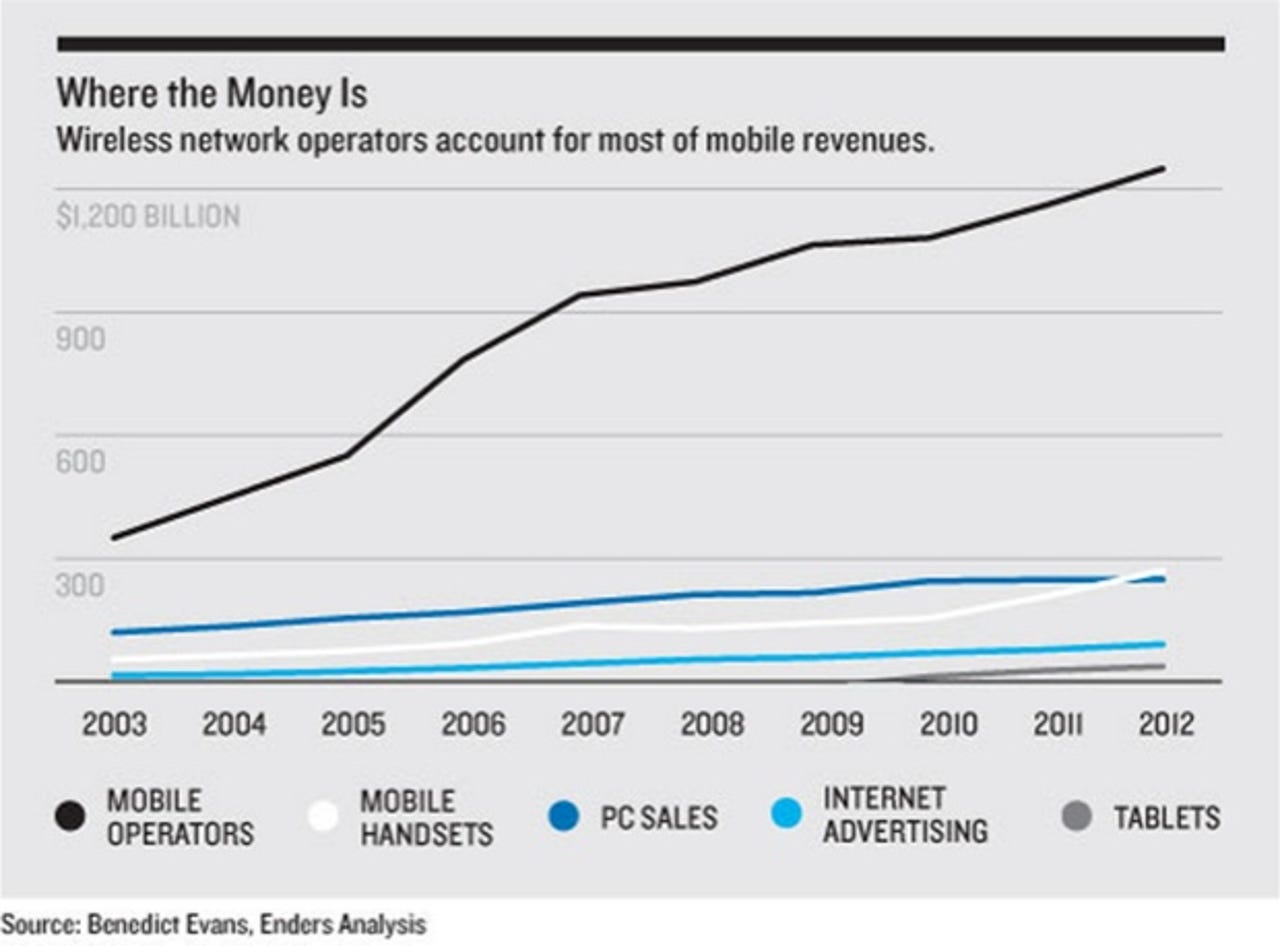Where's most of the post-PC revenue going? Clue: It's not to Apple

Think post-PC mobile devices and you think of companies such as Apple, Google, and Microsoft. While these companies have done more than any other to shape the post-PC world, they're not the biggest winners when it comes to pulling in the dollars.
So who are the winners? It's the wireless carriers.
According to the MIT Technology Review, the 900 or so global wireless carriers pull in a combined revenue of some $1.3 trillion a year. If that sounds like a big number, it's because it is. This is equivalent to four times the combined revenue of Google, Apple, Microsoft, and Intel.

That's a lot of money.
The switch from "dumbphones" to the modern day smartphone has also been good for the electronics industry, helping to keep revenues buoyant.
"In 2007," wrote Antonio Regalado for the MIT Technology Review, "the average wholesale price of a mobile phone was $120 and falling; analysts talked of market saturation because nearly everyone who could afford one, had one. But since then, prices have leapt by 50 percent, and the revenue from all mobile handset sales has doubled."
While smartphone and tablet hardware is what captures consumer's imaginations — and headlines — there's also potential for massive growth for wireless carriers, especially in developing nations.
According to venture capitalist Mary Meeker, some 1.14 billion people already own mobile computers, but that leaves 5.8 billion who don't, 4.5 billion of who are not yet hooked up to the internet. That means that there's an enormous market waiting to be tapped, especially in countries such as India and China.
"The killer app isn't Angry Birds, but access to computing itself," concluded Regalado. Judging by the current revenue data, I think he is right, and as consumers keep the pressure on manufacturers to keep prices low, I can't see this changing any time soon.
If you want that shiny new smartphone or tablet, then unless you have constant wi-fi to rely on, you'll need to throw more money at the wireless carriers.